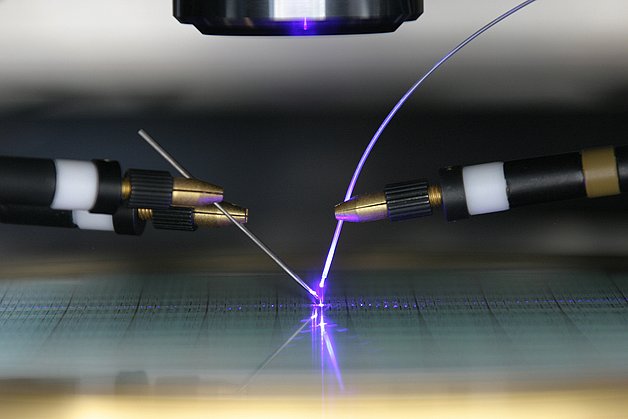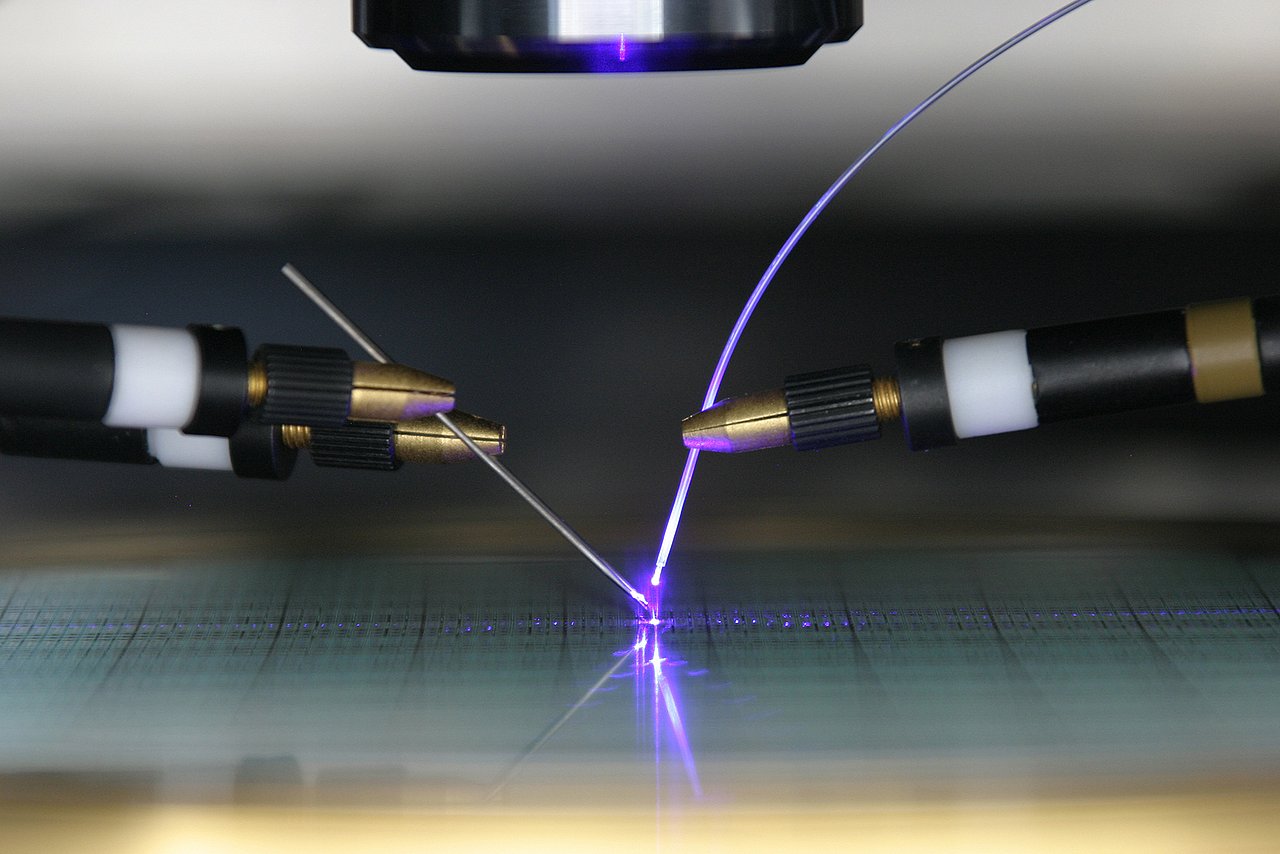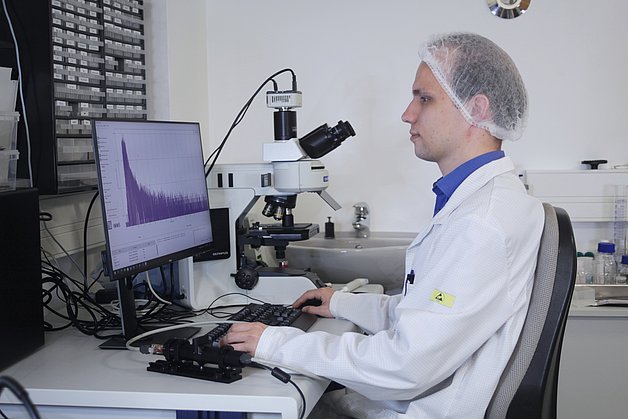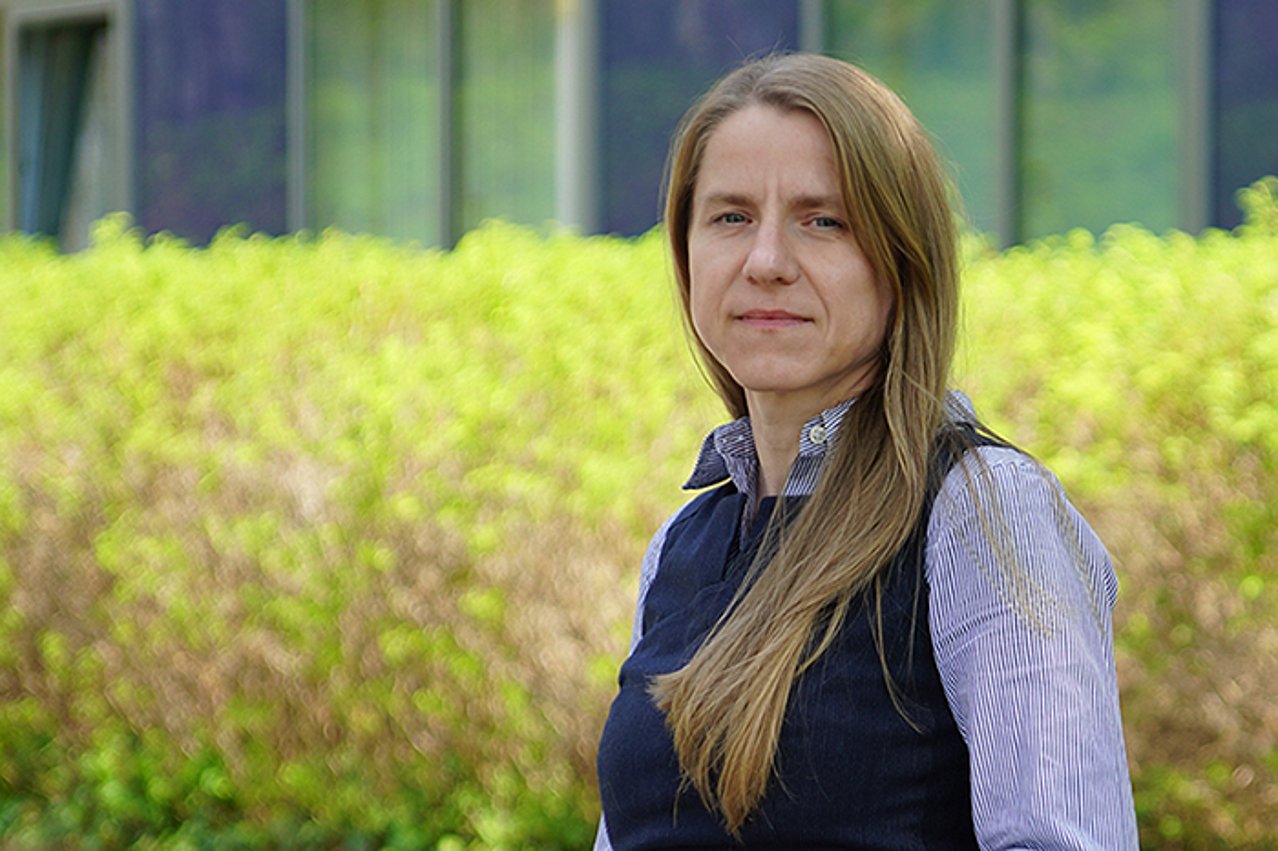Press releases
Rapid detection system for multi-resistances in tuberculosis infections
Eight partners from research and industry launch BMBF FluoResYst project
Ending the tuberculosis epidemic by 2030 is one of the goals of the United Nations. In 2020, about 10 million cases were registered worldwide, and about 1.5 million people died as a result of the disease. This makes tuberculosis the second deadliest infectious disease worldwide after COVID-19. Multi-resistant variants of the bacterium known as Mycobacterium tuberculosis pose an increasing problem in diagnosis and thus in successful treatment, mainly due to a lack of laboratory infrastructure in developing countries. A national alliance of eight companies and non-university research institutions aims to counter this with the help of photonics and presented its solution approaches at the kick-off meeting of the three-year FluoResYst project funded by the BMBF on 13 January 2022. The objective is to develop a compact detection system for multi-resistance in tuberculosis infections for rapid diagnostics and efficient treatment of those affected.
Photonic point-of-care detection system instead of laboratory diagnostics
To tackle multi-resistance of tuberculosis bacteria, suspected cases have to be tested daily and, if they are positive in the laboratory, they have to be treated and isolated quickly. However, the necessary laboratory infrastructure and logistics are usually lacking, because 95 per cent of tuberculosis cases occur in developing and emerging countries. In the project "Time-resolved fluorescence detection for the integrated multi-parameter analysis of multi-resistance, exemplary in tuberculosis", in short FluoResYst, the partners will develop an innovative method for an accelerated diagnosis of multi-resistance of bacterial pathogens using the example of tuberculosis. The goal is a compact and cost-effective photonic point-of-care detection system that will enable tuberculosis diagnostics outside of laboratories and thus quickly and directly on site.
Innovation: Combining fast fluorescence effects with fast detectors
The innovative method is intended to shorten time-consuming manual laboratory steps for biochemical detection and make them available already in the device, on the one hand, and to achieve rapid detection and evaluation via integrated optoelectronic components, on the other.
The detection of the multi-resistance genes of the pathogens is based on a fluorescence quenching effect. In this process, the glow of a fluorescent dye coupled to a DNA fragment is suppressed by the binding of an antibody. If a sample with the gene segment of interest is added, this binding is dissolved and the DNA lights up.
To be able to detect fluorescence, the corresponding fluorescent dyes are excited with light of a certain wavelength and then emit light of a different wavelength, which is measured. To make the detection system favourable, excitation and fluorescence light are not to be distinguished by expensive optical filters, but by their decay times. The fluorescent dyes used for the quenching effect have very short afterglow times in the nanosecond range.
To be able to measure the multi-resistance genes with time resolution, a very fast image sensor and an even faster laser that switches off in the picosecond range are needed as excitation light. New integrated circuits for both are being developed in the project. The image sensor will be developed with new single-photon avalanche diodes (SPAD). These highly sensitive photodiodes, which have so far mostly been used for applications in autonomous driving, can not only detect single photons, but also achieve the required measurement speeds up to the gigahertz range.
Platform also adaptable for other multi-resistance detections
The combination of these two innovations, the biochemical fluorescence quenching antibody assay with the photonic integration of time-resolved fluorescence measurement for short-lived fluorochromes, leads to a new detection technology that greatly simplifies complex analyses that were previously only accessible at great expense and thus makes them widely obtainable. Thus, the development of the platform will not only improve tuberculosis diagnostics and the determination of multiresistance and contribute to the containment of the disease through accelerated diagnostics on site. Its adaptability to other multi-resistance detections will also make it possible to optimise the diagnostics of other infections frequently affected by resistance.
Consortium partners are LIONEX GmbH (consortium coordinator), IMMS Institut für Mikroelektronik- und Mechatronik-Systeme gemeinnützige GmbH (IMMS GmbH), iC-Haus GmbH, X-FAB, DITABIS Digital Biomedical Imaging Systems AG, Fraunhofer-Institut für Zelltherapie und Immunologie, Institutsteil Bioanalytik & Bioprozesse IZI-BB, microfluidic ChipShop GmbH and Institut für Molekulare Diagnostik und Bioanalytik (IMDB) gGmbH.
Funding
The FluoResYst project is funded by the Federal Ministry of Research, Technology and Space (BMFTR) within the photonics research funding framework under the reference 13N15807.
Related content

Project
FluoResYst
The IMMS is developing a SPAD-based sensor for time-resolved readout of fluorescence-labelled DNA microarrays.
Contact
Contact
Dipl.-Hdl. Dipl.-Des. Beate Hövelmans
Head of Corporate Communications
beate.hoevelmans(at)imms.de+49 (0) 3677 874 93 13
Beate Hövelmans is responsible for the text and image editorial work on this website, for the social media presence of IMMS on LinkedIn and YouTube, the annual reports, for press and media relations with regional and specialist media and other communication formats. She provides texts, photographs and video material for your reporting on IMMS, arranges contacts for interviews and is the contact person for events.




